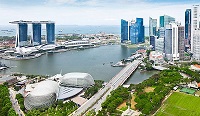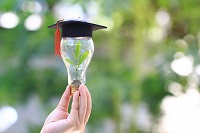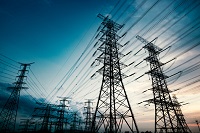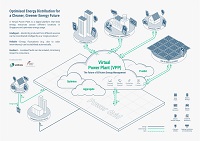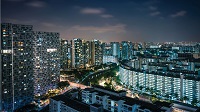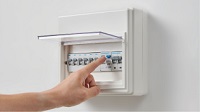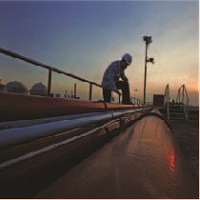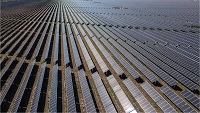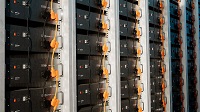Mr Nobuo Tanaka,
Your Excellencies,
Distinguished Guests,
Ladies and Gentlemen,
Introduction
A very good morning to all of you, and welcome to the Singapore International Energy Week (SIEW) 2011 - a platform which brings together policymakers and industry thought-leaders to discuss key issues in the energy sector.
Uncertain Global Energy Landscape
This conference comes at a time of considerable flux in the global economy and energy landscape. Recently, the World Energy Council noted that the outlook for the sustainable supply and use of energy has become more uncertain in 2011, stemming from several key developments. The persistent fiscal and financial difficulties in the US and Europe have increased economic uncertainty and clouded the trends for future energy demand. The prospects for a global climate framework remain unclear, with climate change negotiations proving to be challenging. Meanwhile, the recent spate of unrest in the Middle East and North Africa, has generated doubt over the reliability of energy supplies from the region. And, the Fukushima nuclear accident has prompted countries across the world to urgently review their energy policies, leading some to shift their focus from nuclear power to greater reliance on gas and renewable energy.
These events have caused increased volatility in energy markets and prices, heightening the policy challenge of governments to secure reliable and affordable energy supplies to sustain economic growth. The theme of this year’s Singapore International Energy Week, “Securing our Energy Future”, resonates with the prevailing concerns of governments and is particularly pertinent to Singapore, given our size and almost complete reliance on imports for our energy needs.
This morning, I would like to share with you the strategies we in Singapore are adopting to meet this energy challenge. I also look forward to learning from your views and ideas, at the panel sessions later today and throughout this week, on how we may augment this strategy.
Diversification
Diversification is a cornerstone of Singapore’s energy strategy to ensure that we continue to have secure and competitively-priced energy supplies. You would already be aware of our ongoing effort to bring Liquefied Natural Gas (LNG) to Singapore as an additional energy source. Our LNG terminal is due to commence operations by the second quarter of 2013, and the take-up for LNG has exceeded expectations.
Beyond LNG, we continue to explore more diversification options. Earlier this year at the Asia and ASEAN forum, I mentioned that Singapore is considering electricity imports. We have been carefully studying the possibility of importing electricity from the region as an option for the medium term.
There are clear and mutual benefits to electricity trade. For one, it creates a larger market for electricity producers, enhancing the security of demand and facilitating investment in the exporting country. The importing country, in turn, can benefit from another competitive source of electricity supply. Electricity trade also allows countries to access new energy options that may be unavailable or economically infeasible domestically. These, in turn, could enhance national energy security by broadening the energy mix, both in terms of geographical source as well as fuel type.
There are potential benefits for consumers as well as electricity imports will further spur competition to the benefit of households, industries and businesses.
Furthermore, bilateral or plurilateral electricity interconnections which are developed among neighbouring countries to facilitate electricity imports, could also contribute towards a larger regional effort to strengthen energy connectivity through an integrated ASEAN Power Grid.
In Singapore, the Government has been studying possible models for the introduction of electricity imports that can bring benefits to consumers, without compromising the reliability of our power system. Today, I am pleased to announce that the Energy Market Authority will commence a public consultation exercise, by the end of this year, on the regulatory framework to govern electricity imports to Singapore. Through this consultation, we aim to gather views from industry players and other stakeholders on how we might import electricity into Singapore, and how such imports can be integrated into our market so as to benefit our consumers. The Government will consider the views from all quarters seriously, and incorporate viable proposals into the design of the eventual framework.
Apart from electricity imports, we will continue to explore other options, such as solar energy, to diversify our supply. In that regard, I am glad to note that events such as Photovoltaic Asia Pacific Expo are part of this year’s SIEW. Such events are useful for the community to share the latest developments in the field, and to identify opportunities for potential co-operation and research.
Managing Energy Demand
We recognise that diversification of energy supply is just one part of the equation. Managing energy demand is equally important to ensure sustainable growth. In Singapore, we do this primarily by pricing energy right. We believe that accurate price signals, that reflect the true cost of electricity without distortionary subsidies, will encourage the efficient use of scarce and precious resources.
We also engage our industries to promote energy efficiency. For example, as part of a broader initiative to grow our chemicals industry, we are working with our chemicals companies to explore measures to optimise energy use on Jurong Island. A study was recently conducted for a group of companies in the complex of the Petrochemical Corporation of Singapore (PCS) to seek opportunities for energy efficiency improvements. These improvements, if implemented, will help reduce business costs and render the companies more competitive in the longer term. In addition to industrial engagement, the Government also administers programmes which encourage energy efficient design and technology, and provides training support for energy management professionals.
Encouraging Innovative Energy Solutions
The third prong of our energy strategy is to encourage innovation and the development of technology that can help us overcome our energy constraints. To that end, we seek to be a “Living Lab” for innovative energy solutions. The Government supports various projects and programmes that test new energy technologies that could be adopted in Singapore in future.
One example is our electric vehicle (EV) test-bed programme led by the Energy Market Authority (EMA) and the Land Transport Authority (LTA). Launched in June this year with industry partners Mitsubishi, Daimler and Bosch, the test-bed aims to assess the costs, benefits and feasibility of adopting EVs in Singapore; and to examine future EV infrastructure requirements.
Today, I am pleased to announce that the Renault-Nissan Alliance will be joining this test-bed as well. With the addition of the Renault Fluence and the Nissan Leaf, participants in the test-bed will have a wider variety of Electric Vehicles to choose from. The different EV platforms will also add to the breadth of the test-bed, and enhance the rigour of its findings.
Another example of our efforts to promote innovation is our micro-grid test-bed on Pulau Ubin, an offshore island northeast of Singapore. This test-bed will pilot the use of clean energy resources, such as biodiesel, to generate baseload electricity supply. It will also help us better understand the impact of intermittent renewable energy sources on our power system, and prepare Singapore for a future where renewable energy sources become a more significant part of our energy mix. EMA has appointed a Singapore-based consortium comprising two companies, Daily Life Renewable Energy and OKH Holdings, to design, build, own and operate this micro-grid. We are encouraged by the participation of Singapore companies and hope to see more of them lead similar efforts, at home and in the region.
Conclusion
Let me conclude by drawing on a few points. Singapore, as a small country in a volatile energy environment, faces considerable challenges in securing reliable and competitively priced energy supplies to sustain our growth. To meet this challenge, we have adopted a multi-pronged strategy to manage our energy balance and to develop technologies that can help put us on a firmer footing looking ahead. As part of our effort to continue diversifying our energy mix, we are seriously considering importing electricity as a medium-term option. I strongly encourage industry players and other stakeholders to be forthcoming with your views in response to EMA’s upcoming public consultation on the regulatory framework.
I am heartened to see so many of you here at this year’s SIEW. I commend the organisers for putting together a comprehensive suite of events, which I am sure will provide much food for thought. I wish you all a productive week ahead. Thank you.
